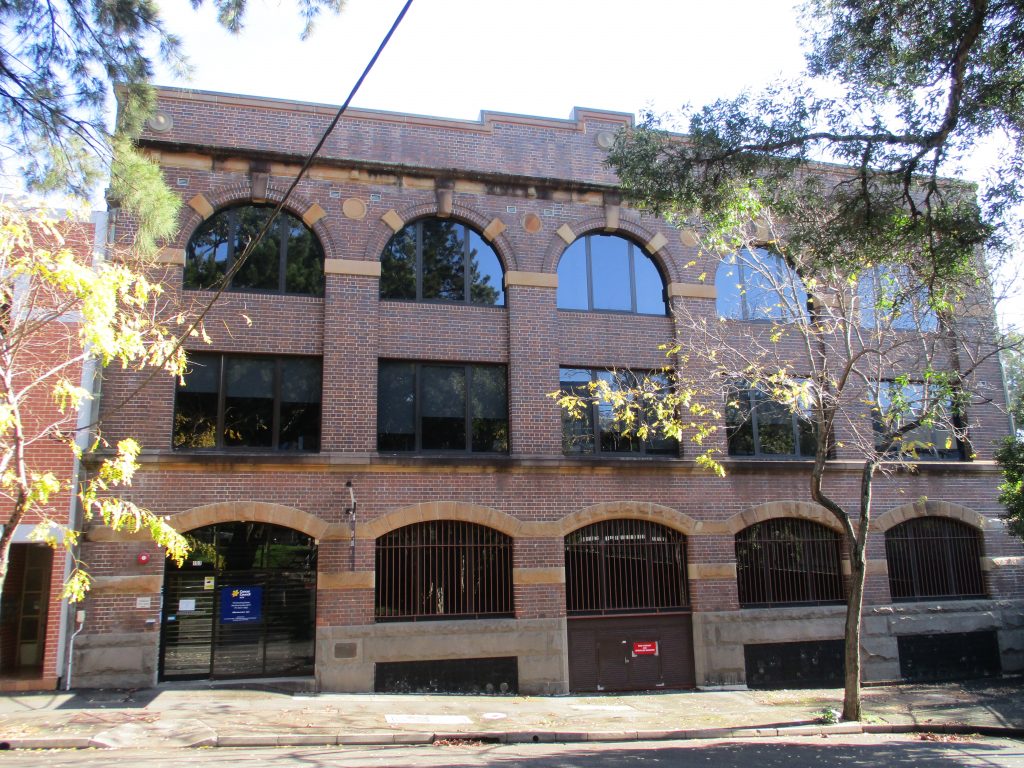Woolloomooloo Warehouse Re-used

153-161 Dowling Street, Woolloomooloo, is historically significant. It is one of the few remaining warehouse developments that were part of the urban development of Woolloomooloo at the beginning of the 20th century. It was built in 1916-17 for Paul and Gray Ltd as a bulk store by Stuart Bros to the design of prominent architects, Kent, Budden and Greenwall.
The warehouse was built as a bulk store for various bulk items.
By 1932 it also contained a service station on the ground floor to cater for the recent influx of motor vehicles on public roads
In 1956 the building was occupied by Associated Newspapers Ltd. Since heritage conservation works and an upgrade in 1991-2 it has been occupied by the NSW Cancer Council. A brass plaque in the facade reads “His Excellency Rear Admiral Peter Sinclair, AC, AO Governor of New South Wales officially opened these premises for the New South Wales Cancer Council on 1 September 1992”.
The original architects, Kent, Budden and Greenwell were formed in 1912 when Carlyle Greenwell became a partner in the firm Kent and Budden which was formed in 1899. Greenwell had served articles with the firm and had just returned to Sydney after completing his BSc Degree in Architecture at Pennsylvania University, USA.
The partnership of Kent, Budden and Greenwell was dissolved in 1919 after the erection of more than 150 buildings. They designed many buildings within the City of Sydney including the Griffiths Tea Building at 46-52 Wentworth Avenue, Surry Hills, and a Federation bungalow, Chesterwood, at 9 Martin Road, Centennial Park.
Harry Kent later entered into a new partnership with Hugh Hamson Ingolds which lasted until Kent’s retirement from active involvement in 1930. Henry Ebenezer Budden and Carlyle Greenwell continued working together until 1923 and had a substantial practise. Budden then continued and took Nicholas Charles Mackey into partnership, practicing as Henry E Budden and Mackey in 1930. Similarly, Greenwell initially worked on his own before forming a partnership known as Greenwell and Shirley.
Today, the former warehouse building remains steadfast firmly rooted in its streetscape alongside the eastern suburb’s railway viaduct, adaptively re-used.
Andrew Woodhouse
Heritage Solutions





